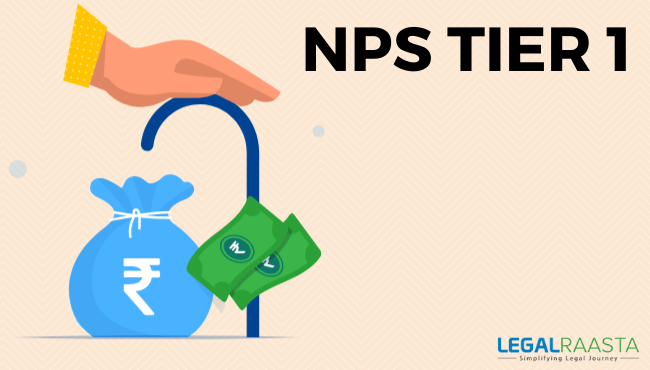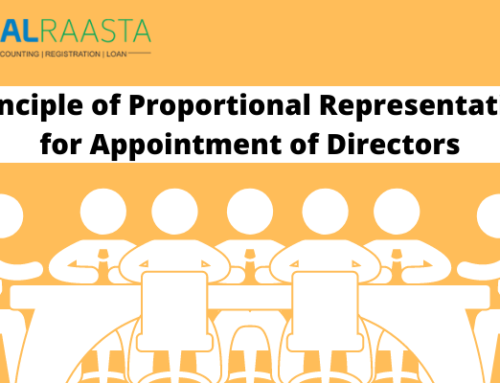The National Pension Scheme (NPS) is a retirement benefits program that provides both tax savings and a pension. NPS Tier 1 and Tier II NPS accounts are the two categories of accounts available in the National Pension System. The National Pension System is governed by the Pension Fund Regulatory and Development Authority (PFRDA) and the Indian government. NPS has a market-linked return rather than a fixed return. The amount of pension one will receive when they retire is determined by the performance of asset classes and the fund manager.
About NPS Tier-1 Account
Contents
NPS Tier 1 accounts are the most basic type of NPS account, and they are available in a variety of flavors, including NPS Government, NPS Central Government, NPS Corporate, and NPS All Citizens. All types of accounts are subject to the same basic rules. However, there are a few exceptions to the general guidelines for each of these accounts. Tier 1 accounts are required, whilst Tier 2 accounts are optional.
A Permanent Retirement Account Number (PRAN) is assigned to NPS Tier 1 accounts (PRAN). This account will be open till the investor reaches the age of 60. As a result, the money is locked in until retirement.
The investor has the option of continuing the investment until he or she reaches the age of 70. The investor can withdraw 60 percent of the investment amount in a lump sum at maturity. This is a completely tax-free transaction. The remaining 40% must be utilized to acquire an annuity. Annuity income is taxed in the year it is received, according to the individual’s income tax slab rate.
Throughout the investment’s life, the investor is required to pay annual contributions. To keep the account active, you must make a minimum investment of INR 500. According to the guidelines, the investor can also remove a portion of his or her investment or choose for a premature exit.
Investors who invest in NPS Tier I accounts are eligible for tax benefits. They can claim up to INR 1.5 lakh in tax benefits under Section 80 C of the Income Tax Act, 1961. They can also seek INR 50,000 under Section 80CCD (1B).
Eligibility for a Tier-1 account
The following are the requirements for opening an NPS Tier I account:
- Citizenship: Citizens of India
- Residents of other countries: Non-residents are also eligible to open an NPS Tier I account.
- 18-65 years old is the upper age limit.
- To start an NPS Tier I account, the applicant must make a minimum investment of INR 1,000.
- Compliant with KYC: The investor must be KYC compliant or willing to go through the KYC process.
How to Create a Tier I NPS Account
An NPS Tier I account can be opened in either online or offline mode. The same is detailed in further detail further down.
- Offline
A Point of Presence – Service Provider must be found in order to open an NPS Tier I account offline (POP-SP). POP-SPs are banks or branches that are authorized to provide NPS services to NPS members. The steps to enroll in the NPS scheme through the offline mode are as follows:
- Obtain a PRAN application form from a POP-SP first.
- Second, make sure the application form is completely filled out and signed, including all required information. When filling out the form, make sure that the ‘Tier I Account’ option is selected. Then, from the available investment managers, choose a fund manager. Finally, decide whether to invest in active or auto mode, which will determine the investor’s asset allocation.
- Finally, send the paperwork after filling out all of the other required information, such as the nominee’s name and attaching all of the KYC documents.
- After that, submit an NCIS (instruction slip) with complete payment information together with the application. The least amount of money to invest is INR 500.
- The PRAN Card will be sent by the Central Recordkeeping Agency (CRA) after a successful registration.
- Online
To open an NPS Tier I account, go to the NPS website and complete the following steps:
- To begin, go to the NPS website’s registration section.
- Second, after inputting all of the required information, authenticate with an OTP linked to your Aadhar card for KYC verification.
- The investor must next choose an NPS Tier I account. They must also select the investing mode (active or automatic) as well as the fund manager. They’ll also have to offer information about the nominee.
- After that, the investor must upload scanned copies of his or her PAN, canceled check, portrait, and signature in.jpeg,.jpg, or.png format.
- Finally, the investor will be forwarded to the payment gateway page after uploading the above files. The investor had to put down a minimum of INR 500 as an initial deposit. T+2 days are required for all investments to be credited to the PRAN account.
- After completing the online registration, a PRAN number will be generated instantly. Make a note of this for future transactions.
Its’s Features
The features of the NPS Tier 1 Account are as follows:
- Retirement Account
The NPS Tier 1 retirement account is a basic pension account. When subscribers open an account, they are given a PRAN (Permanent Retirement Account Number).
- Number of Accounts
There can only be one NPS account per person.
- Maturity
When the investor reaches the age of 60, the NPS account matures. The investor can take up to 60% of the fund’s value at maturity and use the remaining 40% to purchase an annuity plan.
- Withdrawals
Premature withdrawals are permitted in the NPS Tier 1 account. Only if the subscriber has completed 15 years of service and in the form of a repayable advance. Furthermore, these withdrawals are only possible in the event of an emergency. NPS can also be withdrawn for the purpose of building or purchasing an investor’s first home.
Partially withdrawing funds is permitted, but only up to 50% of the funds, and only if the subscriber has completed 25 years of service.
- Employees of the Government
The government and business bonds are mostly invested in the Tier 1 NPS account for public sector employees. Every year, investors must put 10% of their basic plus dearness allowance into the scheme. In addition, the government contributes the same amount.
- Employees who do not work for the government
The NPS Tier 1 account invests in a mix of fixed deposits, equities funds, the government of India bonds, corporate bonds, and liquid funds for private-sector employees. The subscriber is required to invest at least INR 1,000 per financial year.
- Access
The Tier 1 NPS account can be accessed from any location in the United States. Subscribers to the National Pension System (NPS) can switch from public to private sector jobs and vice versa while keeping their NPS account.
- Taxation
Investments in the National Pension Scheme up to INR 1,50,000 are eligible for a tax advantage under Section 80C of the Income Tax Act, 1961.
The NPS Tier I Account Withdrawal Process
Subscribers can request an online withdrawal through their National Pension Scheme (NPS) account login. However, the linked POP must allow and verify the request. To begin the withdrawal process, the subscriber must use their “Claim ID” or “User ID.”
Subscribers to the National Pension Scheme can make withdrawals using their Claim ID and IPIN in the CRA system. This must be done within six months of reaching the age of superannuation or the vesting date.
Taxation of Tier 1 National Pension Scheme NPS account
The tax rules for a Tier I National Pension Scheme NPS account are as follows:
- Under section 80 CCD(1), investors can receive a tax deduction on investments up to Rs 1.5 lakh (section 80C). The deduction must include at least one of the following:
In the case of self-employed people, 10% of their gross income is taxed.
- 10% of salary, or INR 1,50,000 INR 50K in the case of a salaried worker, can be claimed u/s 80 CCD(1b). As a result, the maximum exemption amount is INR 2 lakhs.
- Investors can deduct an additional INR 50,000 as an employer contribution under section 80CCD (2). On employer contribution, the minimum claim should not exceed 10% of the pay. The maximum amount, however, is unrestricted. Also, this exemption under Section 80CCD(2) is in addition to the INR 1.5 lakh deduction available under Sections 80C and 80CCD (1).
- The National Pension Scheme NPS is classified as an EET, which means that the investment and returns are completely tax-free. The withdrawals, however, are taxable.
- On maturity, 60 percent of the withdrawn amount is tax-free. However, according to the investor’s income, 40 percent of the fund amount received from an annuity is taxed according to the income tax rate in which the investor falls.
Difference between NPS Tier 1 and Tier 2 Account
| Parameters | NPS Tier 1 | NPS Tier 2 |
| Eligibility | Between the ages of 18 and 65, Indian citizens | Tier 1 account holders only |
| Lock-in period | Until the subscriber reaches the age of 60. | NIl |
| Minimum number of contributions per year | 1 | Nil, the subscriber has the option of making no investment for the year. |
| Benefits from the contribution in terms of taxes | Section 80C of the Income Tax Act, 1961 allows for a tax deduction on investments up to Rs 1,50,000 every financial year. A tax deduction is available for additional contributions up to INR 50,000 under Section 80CCD (1B) of the Income Tax Act, 1961. | No tax benefit |
| Withdrawal taxes | The entire pension fund sum is tax-free when it matures. | The sum is added to the investor’s taxable income and taxed at the appropriate rate. |
Also, read
Everything to know about Atal Pension Yojana
National Pension Scheme | How to join NPS and what are the documents required






